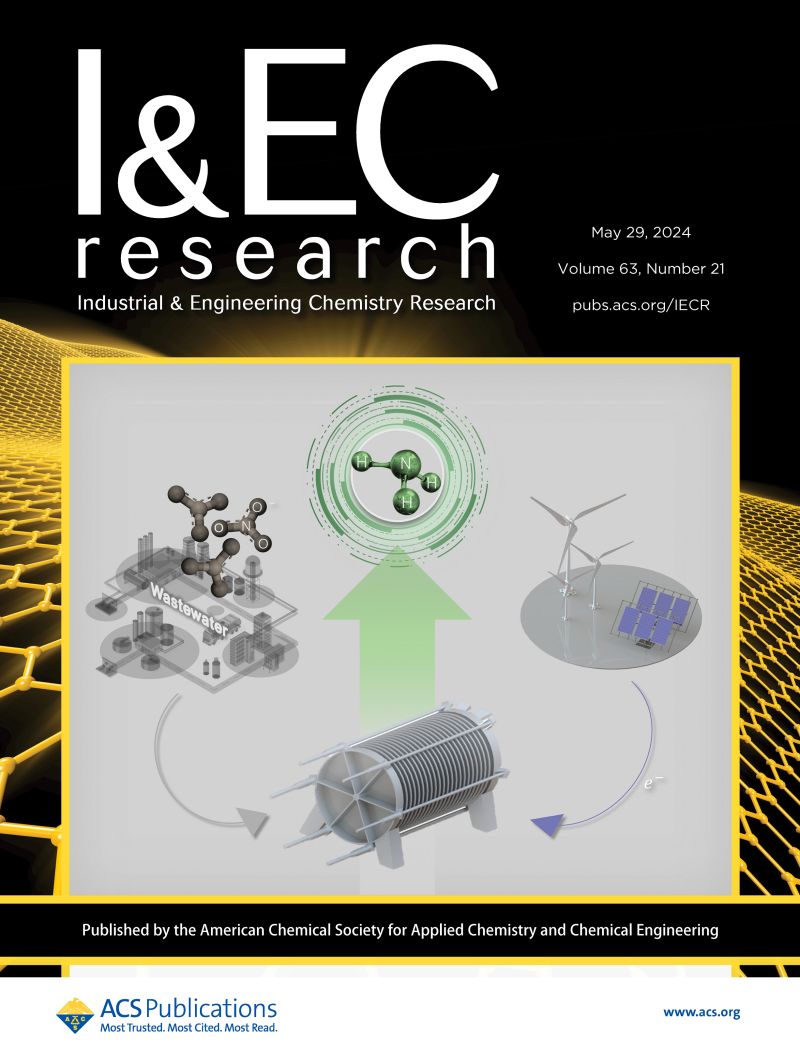Forward Osmosis Desalination Using Thermoresponsive Ionic Liquids: Bench-Scale Demonstration and Cost Analysis
IF 3.8
3区 工程技术
Q2 ENGINEERING, CHEMICAL
引用次数: 0
Abstract
Forward osmosis (FO) desalination using thermoresponsive ionic liquid (IL)–water mixtures is a promising technology for treating nontraditional water sources. However, its demonstration has primarily been at the lab-scale, with water flux and recovery values that are not representative of realistic applications. In this work, the performance of tetrabutyl-phosphonium trifluoroacetate (P4444TFA), as well as a new dual draw of P4444TFA with tetrabutyl-ammonium trifluoroacetate (N4444TFA) is characterized. The dual draw combines the higher osmolality of one IL with the lower critical solution temperature (LCST) of the second IL to outperform its constituents at the same total concentration of IL in water (70 wt %). Experiments were first performed in a lab-scale coupon tester to understand the effects of draw osmotic pressure and viscosity on water flux through the membrane. Bench-scale experiments were then performed in an element tester with a 1 m2 membrane area to evaluate the performance of IL-based FO for the desalination of produced water feed from oil and gas. Specifically, 10 kg of IL-water draw solution was used with 3 kg of real produced water feed, resulting in water recoveries of 60% with initial and final water fluxes of 14 LMH and 3 LMH, respectively. The bench-scale experimental results were used as inputs for a cost analysis, yielding a levelized cost of water (LCOW) of $1.18 per m3. This reveals the potential of IL-based draw solutions for cost-effective desalination of challenging feedwaters using FO.

求助全文
约1分钟内获得全文
求助全文
来源期刊

Industrial & Engineering Chemistry Research
工程技术-工程:化工
CiteScore
7.40
自引率
7.10%
发文量
1467
审稿时长
2.8 months
期刊介绍:
ndustrial & Engineering Chemistry, with variations in title and format, has been published since 1909 by the American Chemical Society. Industrial & Engineering Chemistry Research is a weekly publication that reports industrial and academic research in the broad fields of applied chemistry and chemical engineering with special focus on fundamentals, processes, and products.
 求助内容:
求助内容: 应助结果提醒方式:
应助结果提醒方式:


